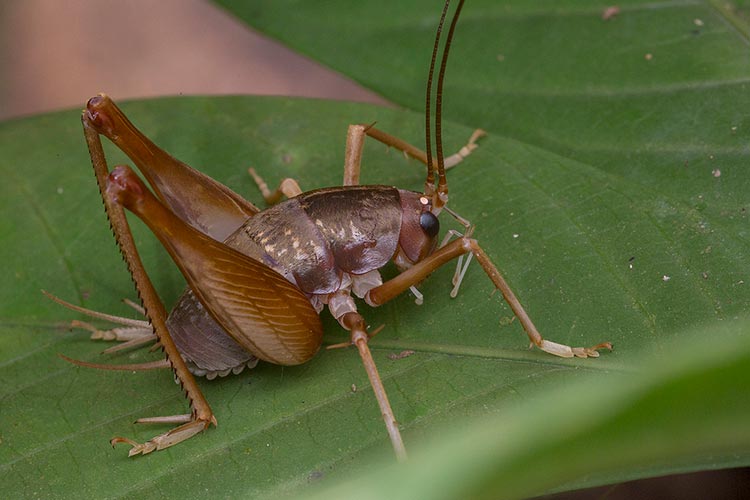Most of us, especially those living in rural areas, are familiar with the sound of crickets chirping. Their sing-song is a signature sound of those long evenings in late summer, and it’s a familiar, pleasant sound. Thus, most of us have wondered at least once — why do crickets chirp?
 Furthermore, those of us who have put some thought into the idea have also wondered why crickets chirp at night more than during the day and why they appear to be louder during the humid, hot summer weather.
Furthermore, those of us who have put some thought into the idea have also wondered why crickets chirp at night more than during the day and why they appear to be louder during the humid, hot summer weather.
Well, today, I have some answers for you, so keep reading to find out.
How Different Types Of Crickets Chirp
The noise that crickets make is a real cacophony of sounds. That’s especially true in the late summer because crickets chirp faster in hotter weather. You might have also noticed that crickets sound different in summer and in the fall.
There are over 900 different species of crickets. Due to that, their signature high-pitched sound varies as well. Primarily, the chirping differs when it comes to the loudness. Mole crickets chirp with a significantly lower volume than field crickets, for example — 88 to their 100 decibels.
The signature sound that crickets make is a result of rubbing the front wings together. But, why do they do it?
Why Do Crickets Chirp?
Just like playing a small violin, crickets rub their wings together to create a sound. However, while both male and female crickets have wings, only the males produce the signature noise because the sound is an evolutionary trait, meant to attract suitable females.
Why Do Male Crickets Chirp?
Male crickets rub their wings together to:
Attract Females
The calling song is very loud for the purpose of attracting all females in the vicinity.
Woo the Females
While we might not be able to differentiate them, male crickets have different types of songs. One is to attract the females, and the other to woo them into mating. This courtship song differs immensely among different species of crickets.
Defend Their Territory
Chirping also serves to ward off other males. When crickets detect competition, they change their chirping into a more menacing “rivalry song” to defend their territory and their females.
Do Female Crickets Chirp?
Even though female crickets have front wings, they aren’t structured in the same way as the wings of male crickets, which is why female crickets can’t produce the signature cricket chirping. They are, however, conditioned by evolution to move toward the sound. That’s why male crickets make it — for reproduction purposes.
Therefore, female crickets will walk or fly toward the sound. If there are many males around the females, they will move toward the chirping that’s the loudest — even a 5-decibel difference can mean success or failure when it comes to mating.
Why Do Crickets Chirp At Night?
Crickets are nocturnal creatures, so it’s logical that they chirp more and more loudly at night when they are more active. That’s when they’re looking for food and potential mates.
Why Do Crickets Chirp During The Day?
Of course, we can still hear crickets even during the day. However, their signature noise is much less frequent. At nighttime, the chirping is louder because it has more than one purpose. During the day, however, crickets chirp only to attract females.
Furthermore, they only do so if they perceive the environment as safe. As soon as they sense a predator or any danger, they fall silent.
How Do Crickets Hear?
While we can also hear the continuous noise of crickets, both female and male crickets have particular auditory organs on their front legs that perceive the chirping. Moreover, they are much better at differentiating the type of song that the male cricket produces.
What Does a Cricket Sound Like?
The noises that a male cricket makes are very high-pitched — above 15 kHz. This is called stridulation, and they achieve it by rubbing the ridges of their front wings together. The best way to describe it would be to compare it to someone dragging a fingernail over the teeth of a flexible comb.
The ridges on the wings create the high pitch. However, the speed of the chirping varies depending on the temperature — it gets faster when it’s hot outside.
How Long Do Crickets Chirp For?
The chirping of crickets is a hallmark summer sound, so it’s only logical to assume that’s their prime season. And, indeed, cricket chirping starts in late July. It grows louder and more frequent in August, and that is a sure sign that the fall is approaching. In the fall,






Leave a Reply